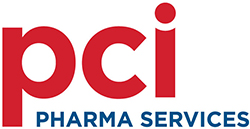As the EPCIS solution functions as the primary hub and integrator for a secure supply chain, it is paramount to select a solution that is the best fit for the supply chain of that company. Key considerations and factors would include the following:
Maturity of the solution
There are a multitude of EPCIS providers in the market today. Given the considerable demand, resources to support EPCIS integration are being taxed and, therefore, new entrants are entering the market from companies not traditionally in the pharmaceutical packaging and logistics industries. Some of these new entrants are entrenched in adjacent sectors, wherein expertise can be logically translated to the pharmaceutical environment. Others are making more dramatic translations into a new frontier.
Assessing the capability of a provider requires in-depth analysis and even basic assumptions should be challenged, such as whether systems can provide 100% reconciliation of all serial numbers being transmitted back and forth between interfaces, or whether data transmission into ERP integration truly happens in real-time, for example. Similarly, an EPCIS provider’s approach to basic software updates can have a crippling impact on day-to-day operations if not communicated and supported properly by both parties.
Pharmaceutical companies need to execute a thorough investigation of the various EPCIS providers under consideration to ensure they are not serving as the guinea pig for a new market entrant. There are a handful of well-established service providers who have supported the market for a number of years. The trade-off is that these providers are attempting to keep pace with significant market demand for their services.
Pharmaceutical companies need to find the appropriate balance of time and attention from their chosen EPCIS provider, while at the same time valuing experience and any impact on overall project timelines — anticipating the usual unforeseen project challenges that can occur.
Experience in global markets
Another key consideration is the destination markets for the pharmaceutical products in question. The US has particular needs and requirements in its supply chain and distribution channels. The fundamental principle of the DSCSA legislation is that a pharmacist or consumer will be able to verify the authenticity of their prescription when received. One would anticipate that this would be through a smartphone app or via a secure, cloud-based web solution. One of the key elements of serialisation implementation in the US that is not currently defined is how data are housed and accessed to fulfil this provision.
EPCIS providers will likely play a critical role in enabling this capability. Behind the scenes, EPCIS providers orchestrate critical parameters for data transmission amongst many participants in the complex supply chain, such as proper data sequencing to ensure that all aspects of the supply chain are successfully enabled, particularly for the authentication of returned goods.
In the European Union, a centralised hub system has already been established to serve as the central repository for serialisation data — to serve as the backdrop for authentication as well as the logistical channel for data sharing in commercial transnational commerce. In effect, and distinctly different than the US model, CMOs would be transmitting data to the central European hub, which in turn would be shared to downstream partners in EU member countries. Knowledge of EU requirements as well as in-country requirements is paramount to success.
As noted previously, emerging market countries have their own distinct requirements and data transmission requirements. China is a notable outlier, with both pre-packaging and post-packaging data requirements flowing through the Chinese government. China itself has changed its policies and approach in just the past few years, and will likely continue to do so in coming years. Clearly, a deep understanding of where products will be sent has a significant impact on the selection of the EPCIS provider, given their experience and expertise in domestic and emerging market requirements and connectivity, ensuring compliance in all circumstances.
Structure of the CMO interface

Pharmaceutical companies may be surprised to learn that they have settled on an EPCIS provider, only to discover that they are not a good fit for the architecture of their CMO’s serialisation approach. In many circles, serialisation is simply viewed as a burden and many CMOs have struggled to prepare themselves for serialisation readiness. Out of convenience, they may have opted for a serialisation architecture solution that minimises their capital outlay or minimises required investment in personnel and dedicated resource for the effort.
The sheer scale of the volume of data to be supported and transacted is enormous. This approach can translate to additional burden and cost for the pharmaceutical manufacturer in the form of additional custom configuration or transactional requirements between the EPCIS provider and the CMO.
Often, this frustrating conversation happens many months into a serialisation initiative. Furthermore, pharmaceutical companies may find that they have to execute a custom configuration for each individual product and market they wish to serialise with their CMO.
At the onset of PCI’s serialisation journey, a thorough evaluation of market providers led us to create a serialisation architecture that provided maximum flexibility for the multitude of customers and global markets we needed to service. This approach required additional investment in personnel and resource on our part to prepare a solution that could easily interface with any client-preferred EPCIS provider.
To onboard our clients, and given the maturity and global experience of the chosen EPCIS provider, a typical initial integration can range from as little as 3 weeks for a very established provider to as much as 4 months for a lesser experienced provider. With PCI’s architecture approach, this integration is a one-time event that enables connectivity to all global sites and supports all current and future products, regardless of market destination. This is considerably different to the approach of other CMOs and the EPCIS providers they may be aligned to, and how they have structured their individual sites and systems. Pharmaceutical customers may find that, based on the specifics of their CMO and EPCIS provider, they may have to map each site (or manufacturing line) and each product individually, which represents a considerable resource challenge and timing obstacle. This can lead to tremendous frustration.
Finance
Timing and resources are always primary considerations in the serialisation journey, but cost is always the key parameter for a pharmaceutical company’s ultimate selection. Firms need to ensure that they ask the appropriate questions at all stages of selection and take the guidance of experts to certify they have fleshed out the full scope of cost structures. Some EPCIS providers offer pricing structures that can be transactional in nature, both for inbound and outbound data at different points in the connected supply chain.
Further understanding of cost requirements can only be garnered by in-depth discussion. This is paramount to avoid hidden fees and cost overruns, which are often problematic when bringing multiple service providers together, particularly if they have not worked together in the past. With serialisation, many market regulations have come to be moving targets and subject to change, which can further exacerbate timeline and scope-creep challenges. A reputable EPCIS provider will help to drive this in-depth discussion at the onset to provide a transparent and robust proposal, identifying costs for current requirements as well as anticipating pending or potential changes in market requirements.
Conclusion
There are many experienced and reputable EPCIS providers available in the market. They can provide considerable assistance in the journey towards achieving both compliance with global serialisation requirements and supporting a robust anticounterfeiting and supply chain security strategy. Selecting the right partner for the journey is of the utmost importance as they will support you for many years to come. Changing vendors once integrated is difficult and cumbersome. In vendor selection, pharmaceutical companies are encouraged to ask around and seek guidance, through CMOs, 3PLs and wholesaler trading partners, as well as industry colleagues.
What is considered to be a small industry seems to be increasingly so in the world of serialisation … and a congenial knowledge sharing culture has emerged. Clearly, sharing practical experience is the most effective way to ensure a successful outcome.
This article appeared in the October issue of Manufacturing Chemist

